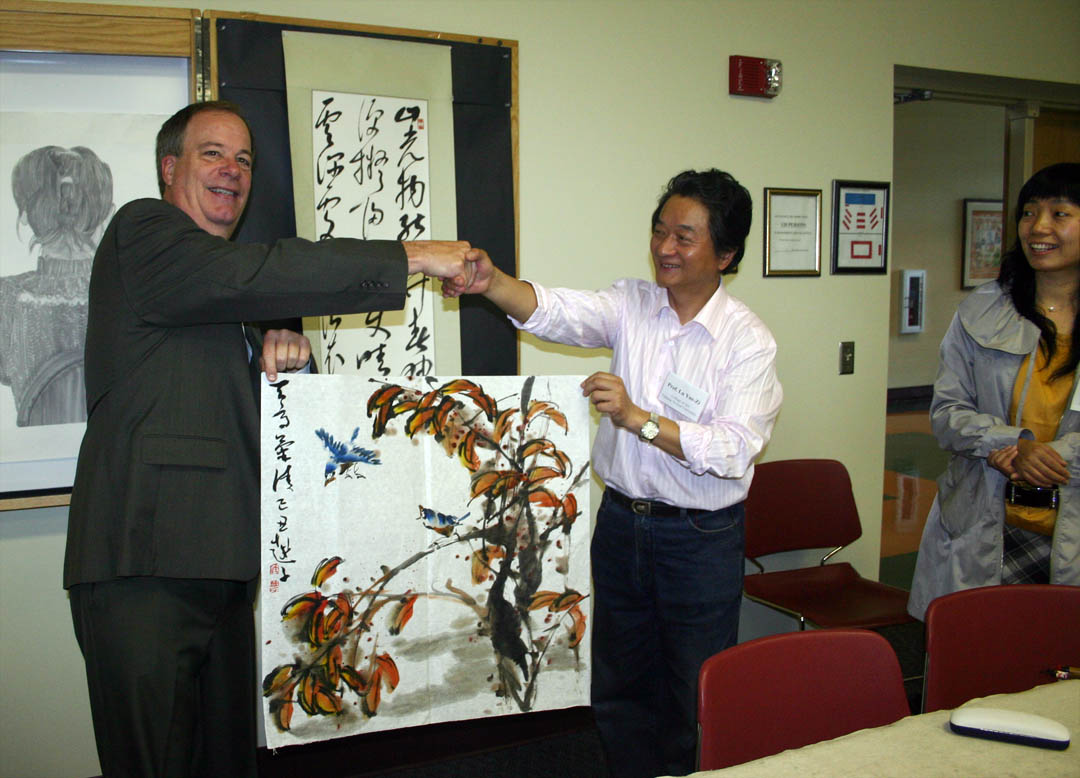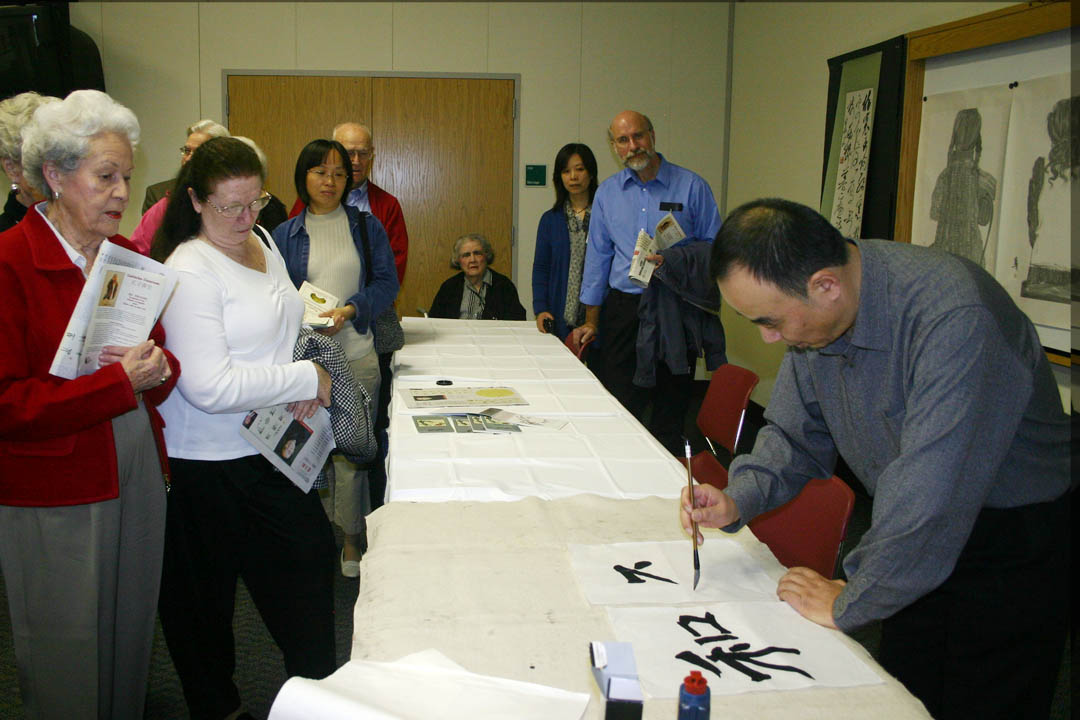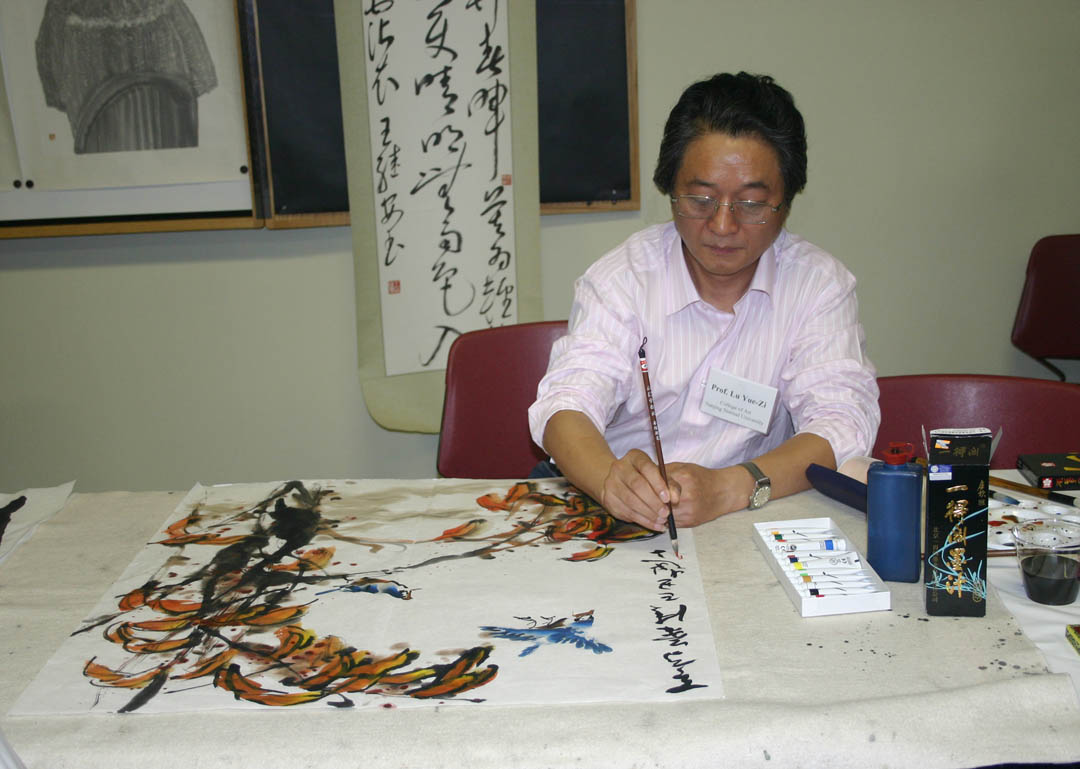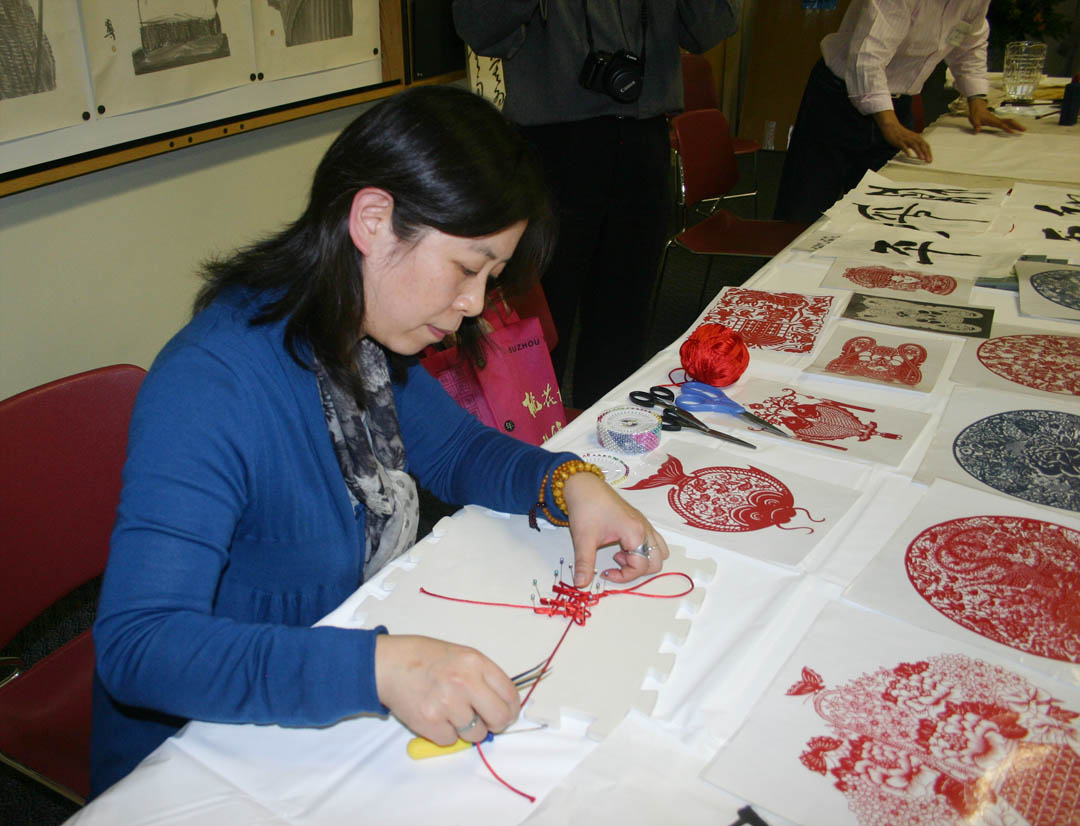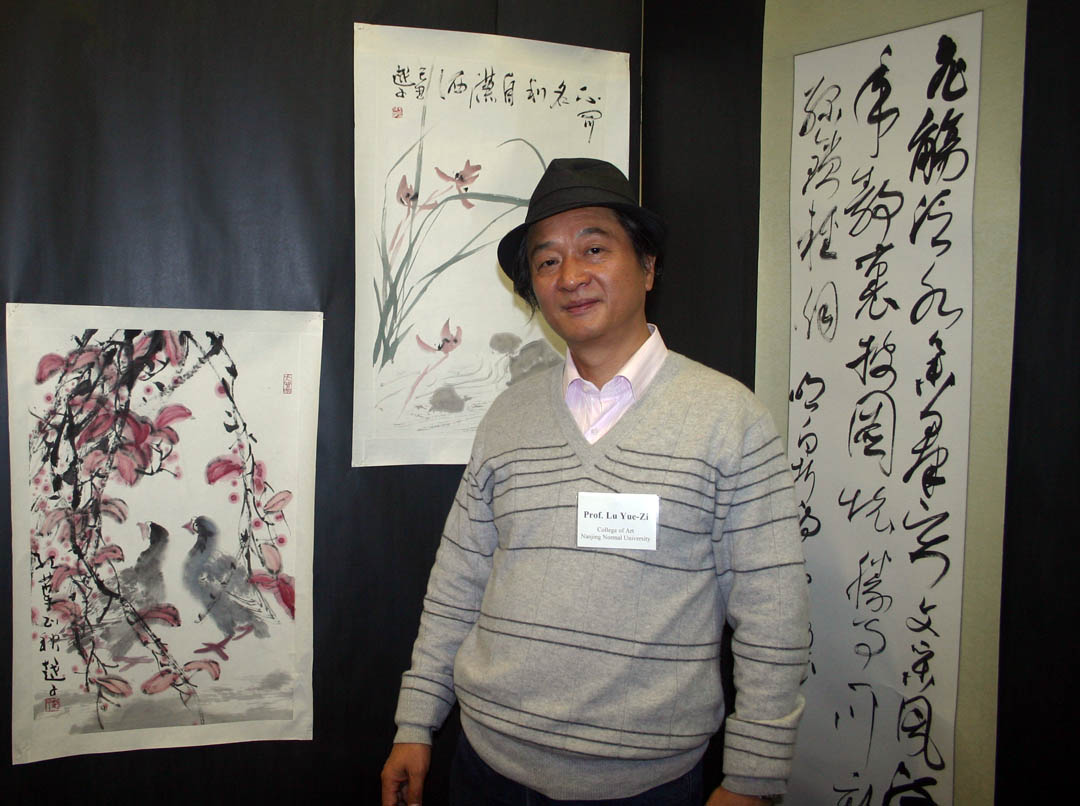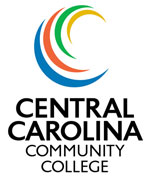SANFORD — The language of art bridged the communication barrier between Chinese artists and those attending Central Carolina Community College’s Chinese Art Exhibition Thursday.
Visitors admired the delicate but powerful images of nature captured in the paintings and the beauty of the calligraphic works.
“These works are different, beautiful,” said Geri Guwang, of Carolina Trace, one of several hundred area residents who came to enjoy both the art and the artists. “I wish the paintings were available. I would like to take some home.”
The one-day exhibition at the McSwain Center featured traditional Chinese paintings and calligraphy by faculty of the College of Fine Arts of Nanjing Normal University in the People’s Republic of China. It was exhibited Nov. 18 at North Carolina State University through the university’s Confucius Institute. The Institute is a center for the teaching of Chinese Mandarin language and culture in cooperation with Nanjing Normal University and Han Ban, the People’s Republic of China’s National Office of Teaching Chinese as a Foreign Language. It also arranges intercultural events between China and the North Carolina, such as the art exhibition.
Central Carolina Community College brought the exhibition to Sanford through its partnership with NCSU’s Confucius Institute. The college has started a Confucius Classroom under the aegis of the Institute, to bring Chinese language instruction and cultural exchanges to its service area of Chatham, Harnett and Lee counties.
Most of the artists did not speak English, but Professor Shuya Che, of the college’s Confucius Classroom, and Guanglin Dai, program manager for NCSU’s Confucius Institute, translated for them.
“We are two different countries, but we can come together and understand each other,” said Professor Xiangwei Li, Dean of Fine Arts at Nanjing Normal University. “There is a wonderful feeling of the people in North Carolina. The scenery is beautiful, the people are friendly. I hope some people from America will come and learn about China so we can be mutually benefited.”
Dai spoke to the visitors about the various styles of Chinese calligraphy, which is the writing of poetry and sayings in artistically drawn Chinese characters. She used works in the exhibition to illustrate them. Professors Ji-an Wang and Hanping Chang, using ink and brush on rice paper, demonstrated the different styles.
Visitors were also impressed to learn that many of the paintings were inspired by the teachings of Confucius or poetry. The opening words in a poem serve as a painting’s title. Traditional Chinese art writes the poetry or saying as part of the painting, so artists are also calligraphers. NNU Associate Professor Mi Lu delighted and impressed visitors with her Chinese folk art, including knot work, similar to macramé, and finely detailed scissors art.
The artists gifted several works to the college in appreciation for hosting the exhibition and the friendship shared. Professor Yue-zi Lu created a brush painting of autumn leaves and blue birds while visitors watched, then presented it to college President Bud Marchant.
“Thank you,” Marchant responded. “This is wonderful.”
Sarah Lawrence, of Sanford, was also among the many visitors to the exhibition.
“I’m loving it — it’s wonderful,” she said. “I particularly liked the painting [Professor Lu] did for the college. He noticed the beauty of our area, the color in our woods and captured that. It was such a treat to see him do it.”
The Chinese artists are now on their way to Washington, D.C., and New York for sightseeing before returning to China.
“We had a great turnout,” Marchant said at the close of the event. “The artists were pleased. It is so important that we connect with the rest of the world. This is one way Central Carolina Community College is doing it. Today was a confirmation that people in our area are looking to connect with other parts of the world as we become a global society. I’m excited that we were able to bring not only a great cultural resource here but also an important economic development tool as companies look for areas with a global outlook.”
